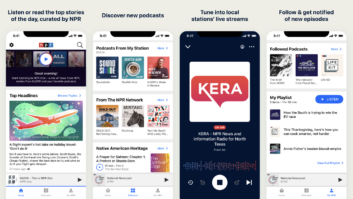How will the emergence of broadband wireless affect the adoption of mobile video in the United States? It’s a question that new media experts — within and outside of radio and traditional TV — continue to watch.
Consulting company Frost & Sullivan dug into that question this week.
“Currently, a significant percent of mobile phones in North America are video-enabled,” it noted. “Streaming video content has been delivered to mobile devices for nearly five years already.
With improvements in networks, devices, content creation, delivery and protection frameworks, it continued, “mobile video services are set to become immensely popular channels for entertainment and information on the go.” Peer-to-peer services such as mobile video telephony will further encourage adoption.
It predicts that consumers can “expect greater choices in terms of content, service providers, pricing plans and devices. Mobile advertising can also play an important role in subsidizing services and boosting adoption.”
The company said providers and consumers both face a big challenge in finding the right mix of basic and premium services for the mobile environment. Also, “The network and presentation layers need to present a unified experience to the consumer without inundating them with multiple pricing plans and service guides.”
Service providers, the company said, should ensure that subscribers are aware of mobile video services and continue to justify the cost of basic mobile video services included within data plans.
The focus, it said, “should be placed on making sure that the best content is available without merely adding channels to the service lineup.” (Where have we heard that before?)
Senior Analyst Vikrant Gandhi was quoted by the company saying, “High-speed networks, capable devices and flat-rate data plans drive market growth. 3G services are available in all major cellular markets and subscribers can virtually watch unlimited basic videos when they subscribe to the high-speed wireless data plans that cost $15 to $20.”
Mobile operators, the analyst continued, “are constrained to expand their content catalogues but are unable to increase the data plan rates to justify the expansion. At a certain ‘tipping point,’ it could be unfeasible to continue doing this without exploring other sources of revenues such as mobile advertising.”
Gandhi said mobile operators could classify content into various tiers and match them to customer demographics. “Partnerships with existing and emerging broadcast networks will also be vital to stay at par with the competition.”












